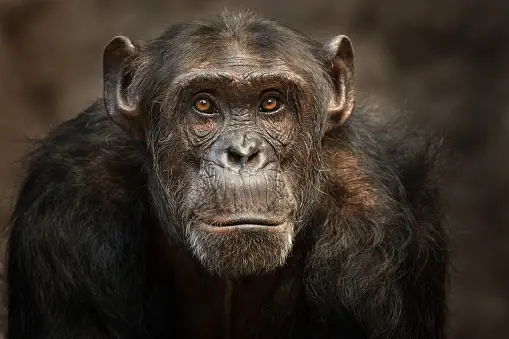Gombe Stream National Park, nestled in the heart of Tanzania, is a place of stunning natural beauty. Steep valleys, diverse forest vegetation, and a rich array of wildlife characterize the park.
Accessible only by boat, its secluded location ensures the park’s ecosystem remains unique and largely undisturbed.
Lake Tanganyika lies on its western border, inviting visitors to swim among dozens of tropical fish species.
However, one of the most fascinating aspects of Gombe Stream National Park is its chimpanzee population, made famous by the groundbreaking research of primatologist Jane Goodall in the 1970s.

The Seeds of Conflict
Jane Goodall’s journey to Gombe began in the 1960s when she was sent to observe chimpanzees.
At the time, chimpanzees were generally regarded as amiable and non-violent creatures.
Goodall’s extensive research, however, revealed the complexities of chimpanzee behavior, including their capacity for violence, political alliances, and territorial disputes.
Goodall discovered that chimpanzees in Gombe formed hunting parties to capture smaller monkeys, displaying a surprising level of brutality.
Her observations also noted that these primates lived in communities often divided by the park’s natural terrain, with groups consisting of up to forty members.
The conflict known as the Gombe Chimpanzee War erupted in 1974, but its roots traced back several years earlier.
In the late 1960s, the Kasakela tribe of chimpanzees in Gombe was a unified group led by Leakey, the alpha male.
Following Leakey’s death in 1970, a power struggle emerged within the tribe. Humphrey, a dominant but not extraordinary chimp, succeeded Leakey as the alpha male.
His leadership was contested by two brothers, Charlie and Hugh, who began to challenge his authority. This internal conflict gradually led to a division within the Kasakela tribe.
Humphrey’s faction, the Kasakela, stayed in the northern part of the park, consisting of Humphrey, Figan, Satan, Sherry, Evered, Rodolf, Jomeo, twelve adult females, and their young.
In contrast, Charlie and Hugh led a splinter group southward, forming the Kahama tribe with Godi, De, Goliath, the young Sniff, three adult females, and their offspring.
These two groups coexisted for several years with a growing sense of tension.
The Outbreak of War
The simmering tensions erupted into open conflict in January 1974. The precise trigger remains unclear, but a war party of six Kasakela males, including Humphrey, attacked Godi from the Kahama tribe while he was feeding.
Godi was ambushed and beaten with a rock, and although he escaped, he was never seen again. This marked the first recorded instance of chimpanzees killing one of their own, a shocking revelation for Goodall and her team.
Over the next four years, Humphrey’s group systematically targeted the Kahama males. De and Hugh were ambushed and killed, often while they were foraging alone.
Even Goliath, who had been friendly with the Kasakela, fell victim to an attack. The relentless assaults continued until all the Kahama males, including the young Sniff, were dead.
The Kasakela then turned their attention to the Kahama females, killing some, causing others to disappear, and assimilating the rest.
Scientific Skepticism and Validation
Initially, Goodall’s findings were met with skepticism. Critics accused her of anthropomorphizing the chimpanzees and influencing their behavior through her interactions.
However, subsequent studies by other scientists confirmed that such violent behavior and territorial wars were not unique to Gombe. Similar patterns were observed in 18 different African chimpanzee communities, validating Goodall’s observations.
These studies revealed that chimpanzee social structures are complex and deeply rooted in primate evolution.
The death of an alpha male often led to a power struggle and subsequent conflicts. Various factors, including resource scarcity or competition for mates could trigger such wars.
The Aftermath
After exterminating the Kahama tribe, the Kasakela took over their territory. However, their victory was short-lived.
A larger group of chimpanzees, the Kalande, invaded the newly acquired land. Faced with superior numbers, the Kasakela retreated to their original territory, bringing the conflict to a close by 1978.
Goodall’s documentation of the Gombe Chimpanzee War provided unprecedented insight into chimpanzee social dynamics.
Her detailed observations and subsequent digitization of her notes have made this significant period in primate research accessible to a broader audience.
Despite the initial controversy, her work remains a cornerstone in studying primate behavior and has dramatically enhanced our understanding of our closest relatives in the animal kingdom.

